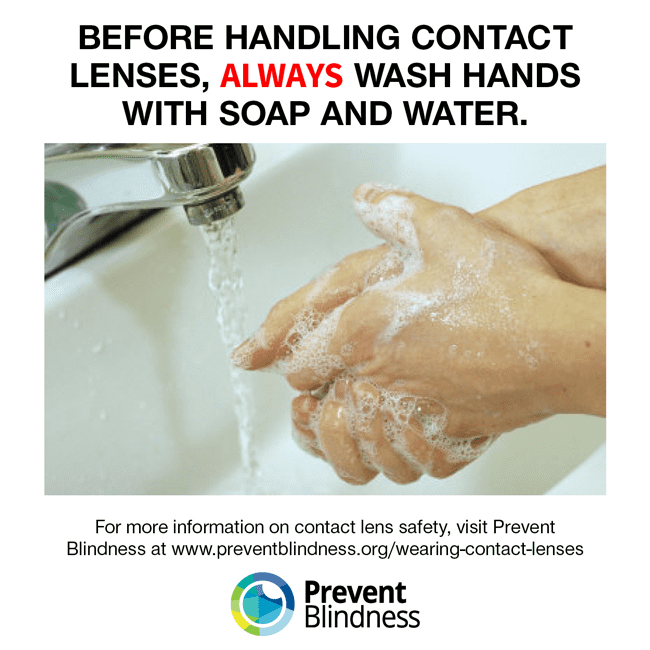Improper Contact Lens Use May Cause Painful Eye Infections, Including Keratitis, Which Could Result in Vision Loss or Blindness
Because an estimated 45 million people in the United States wear contact lenses, according to the U.S. Food and Drug Administration, Prevent Blindness has declared October as Contact Lens Safety Month. Contact lenses are classified as medical devices and it is important for consumers to use them safely and under the direction of an eye care professional. Prevent Blindness seeks to provide the public with information to keep eyes healthy while using contact lenses.

The FDA states that contact lenses are not over-the-counter (OTC) devices. Companies that sell them as such are misbranding the device and violating Federal Trade Commission regulations by selling contact lenses without a prescription. Contact lenses sold without a prescription from unlicensed vendors such as certain online distributors, novelty stores or tattoo parlors may be contaminated and/or counterfeit and therefore not safe to use.
According to the American Academy of Ophthalmology, there are a number of things that can cause a contact lens-related infection. Some causes of infection may include:
- using extended-wear lenses
- sleeping in your contact lenses
- having microbes build up under the lens
- herpes virus
- bacteria, fungi, or parasites
- not keeping lenses or cases clean, or reusing or topping off contact lens solution
Additionally, the Centers for Disease Control and Prevention (CDC) has stated that there is no evidence to suggest contact lens wearers are more at risk for acquiring COVID-19 than eyeglass wearers. Nevertheless, contact lens wearers should continue to practice safe contact lens wear and care hygiene habits.
Wearing contact lenses, especially sleeping in the lenses, increases the risk of both infectious and noninfectious keratitis. Keratitis, also known as “corneal ulcer,” is an inflammation of the cornea – the clear, dome-shaped window located at the front of the eye that covers the iris and pupil.
Symptoms of keratitis include:
- Eye pain and/or eye redness
- Excess tears or other discharge from your eye
- Difficulty opening your eyelid because of pain or irritation
- Blurred vision
- Decreased vision
- Sensitivity to light (also called photophobia)
- A feeling that something is in your eye
Keratitis can cause permanent vision loss. Seek medical attention from an eye doctor right away if any of these symptoms are present. For more information on keratitis, visit the new Prevent Blindness online resource at: https://preventblindness.org/keratitis/. The development of this new resource was supported by a grant from Mallinckrodt Pharmaceuticals.
“Contact lenses can be a good alternative to eyeglasses for many people,” said Jeff Todd, president and CEO of Prevent Blindness. “It’s important to follow the advice of an eye care professional to avoid painful and potentially blinding eye infections from improper or unsafe practices.”
For more information on contact lens safety, please visit http://www.preventblindness.org/wearing-contact-lenses. For more information on keratitis, please visit https://preventblindness.org/keratitis/.
